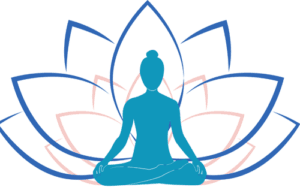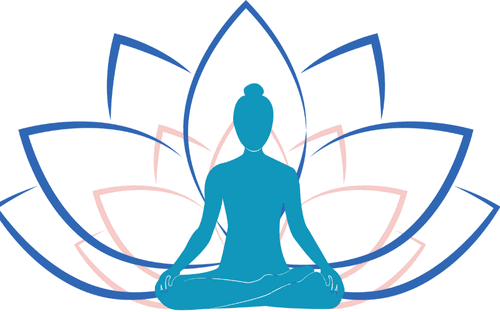Understanding Emotional Energy and Its Impact on Emotional Balance
Emotional energy is a fundamental aspect of human experience, influencing both mental and physical well-being. It encompasses a range of feelings, from joy and love to sadness and anger. How we manage and process these emotions can significantly affect our overall health. Negative emotions, if not addressed, can become trapped within the body, often manifesting in physical symptoms and discomfort.
Achieving emotional balance is essential for overall well-being, allowing us to navigate life’s challenges with resilience and grace.
For instance, emotions related to stress and anxiety may build up in the heart and hips. The heart, perceived as a center for emotional processing, can reflect feelings of grief or fear. In contrast, the hips, which often symbolize stability and grounding, may hold unprocessed anger or resentment. Recognizing the connection between our emotional state and these physical manifestations is vital for achieving balance in our lives.
Many individuals may find it challenging to acknowledge negative emotions. Society often encourages the suppression of feelings deemed undesirable, leading to a disconnect between the mind and body. However, this disconnect can create a cycle of negative energy, contributing to a range of physical ailments, such as tension in the muscles or digestive issues. To counter this, it is paramount to engage in practices that foster emotional awareness and release.
Yoga emerges as a powerful tool for addressing these challenges. Through mindful movement, breathwork, and meditation, yoga encourages an introspective journey, allowing practitioners to confront and process their feelings. By incorporating poses that target the heart and hips, yoga facilitates the release of stored emotional energy, promoting a sense of emotional balance and harmony. Ultimately, acknowledging and processing our emotional energies paves the way for a healthier, more fulfilling life.
The Role of Yoga in Emotional Processing
Yoga serves as a powerful tool for emotional processing, allowing practitioners to engage deeply with their feelings and develop a greater sense of self-awareness. Central to many yoga practices is the principle of mindfulness, which encourages individuals to focus on the present moment and observe their thoughts and emotions without judgment. This mindful approach can significantly enhance one’s ability to understand and process emotions, leading to emotional clarity and balance.
Through various yoga techniques, individuals are encouraged to explore their emotional landscape. For instance, restorative yoga and yin yoga, which focus on gentle poses held for longer periods, provide ample opportunity for introspection. Practitioners can cultivate a safe space to delve into their emotions, acknowledging and processing feelings that may have been suppressed. Furthermore, more active forms of yoga, such as vinyasa or ashtanga, promote a dynamic interaction with breath and movement, which can serve to release pent-up emotions. The combination of physical exertion and mindfulness often leads to heightened emotional awareness.
Breathwork, or pranayama, is another essential aspect of yoga that further aids in emotional processing. By controlling and deepening breath, individuals can engage their parasympathetic nervous system, promoting relaxation and reducing stress. This regulation of breath helps to clear emotional blockages, making it easier to confront and navigate complex feelings. Specific techniques, such as alternate nostril breathing, are particularly effective in harmonizing both hemispheres of the brain and fostering emotional equilibrium.
Incorporating these elements of yoga into a regular practice not only facilitates emotional exploration but also enhances overall emotional health. By embracing self-awareness and mindfulness, individuals cultivate resilience in facing emotional challenges, paving the way for deeper healing and balance.
Yoga Sequence for Releasing Negative Emotions
Creating a yoga sequence specifically aimed at releasing negative emotions can effectively bring about emotional balance. This sequence incorporates heart-opening poses and hip stretches, which are instrumental in alleviating stored emotional tension. Here is a step-by-step guide to performing these poses:
1. Cat-Cow Pose (Marjaryasana-Bitilasana) – Start on all fours with your wrists under your shoulders and knees under your hips. Inhale as you arch your back (Cow) and look up. Exhale as you round your spine (Cat) and tuck your chin towards your chest. Repeat for five breaths. This pose helps to release tension in the spine and encourages emotional expression through movement.
2. Camel Pose (Ustrasana) – Kneel on the floor, with your knees hip-width apart. Place your hands on your lower back for support. Inhale and arch your back, reaching towards your heels or grasping your ankles. Hold for five breaths. Camel pose opens the heart space, allowing for the release of pent-up emotions.
3. Pigeon Pose (Eka Pada Rajakapotasana) – From all fours, bring your right knee forward to your right hand, extending your left leg back. Lower your torso down towards the floor. Hold for five breaths, then switch sides. This hip opener allows for emotional release and helps combat feelings of stress and anxiety.
4. Bridge Pose (Setu Bandhasana) – Lie on your back with knees bent and feet flat. Press your feet into the ground, lifting your hips toward the sky while interlacing your fingers beneath your back. Hold for five breaths. This pose opens the heart and encourages emotions to flow.
As you practice these poses, synchronize your breath with your movements. Inhaling can be associated with opening poses, while exhaling can emphasize grounding and releasing tension. Integrating this sequence into your routine can significantly contribute to your emotional balance.
Building Emotional Resilience Through Regular Practice
Integrating yoga into one’s daily routine offers profound long-term benefits for emotional balance and resilience. Regular practice not only enhances flexibility and strength but also cultivates mental clarity and emotional stability. Over time, practitioners may notice more balanced emotional responses to life’s challenges, which is a key component of emotional resilience. This process encourages the individual to develop a healthier perspective on stress, allowing them to navigate difficult situations with a sense of calmness and composure.
One of the primary ways yoga fosters emotional resilience is through mindfulness. The meditative aspects of yoga cultivate a heightened awareness of one’s thoughts and feelings, allowing individuals to observe their emotional responses without judgment. This practice of mindful observation often leads to better regulation of emotions, enabling practitioners to replace negative thought patterns with constructive ones. Furthermore, this clarity often prompts positive shifts in behavior, resulting in improved relationships and overall quality of life.
Creating a supportive environment is essential for maintaining a consistent yoga practice. Individuals can establish a dedicated space in their home that is serene and clutter-free, ideally infused with calming elements such as soft lighting, plants, and soothing music. Setting aside specific times each day for practice can solidify yoga as a fundamental aspect of one’s routine, making it a non-negotiable commitment to personal growth. Additionally, connecting with a community, whether in-person or online, can provide significant motivation and support. Engaging with others who are equally invested in their yoga journey helps reinforce the decision to prioritize emotional wellness.
In conclusion, by embracing yoga as part of a daily practice, individuals can build emotional resilience over time, enhance their mental clarity, and cultivate a more balanced emotional landscape. This commitment not only benefits the individual but also creates a ripple effect of positivity in their environment, fostering continued personal growth and self-discovery.



